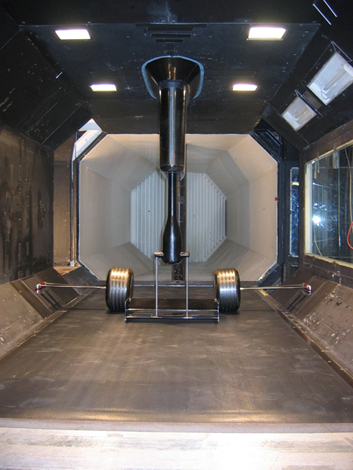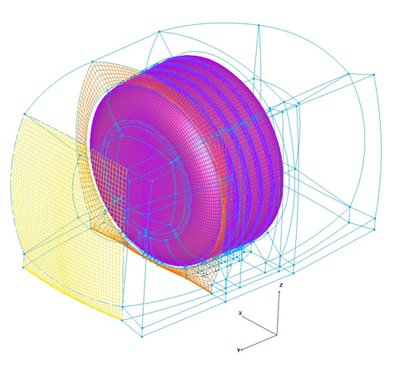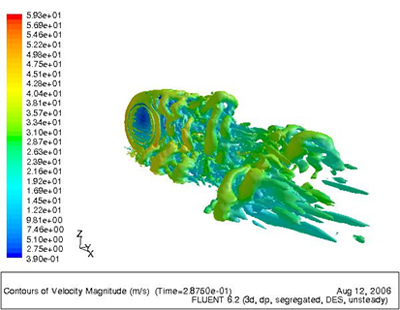So far most research in racecar aerodynamics concerns study of components in isolation (wings, diffusers, wheels), limited literature available on interaction and previous studies use simplified modelling techniques that lead to incorrect conclusions (Kellar, Pearse, Savill [1999]: no ground movement or wheel rotation (in CFD); Diasinos, Barber, Leonardi, Gatto [2004]: 2D CFD simulation)
What is the influence of an upstream-mounted wing on the aerodynamic characteristics of a wheel and vice versa?
How does the aerodynamic interaction between these components of the configuration depend on vertical, streamwise and spanwise position variations of the wing relative to the wheel?
Which flow mechanisms and phenomena cause the observed behaviour and what would be the main factors of influence for these physics?
Would it be possible to reproduce the qualitative (flow features and phenomena) and quantitative (correlation with experimental results) aspects of wing – wheel interaction with the use of current, ‘state-of-the-art’ CFD simulations?

Grid: fully structured, 200 blocks, baseline 3.2mln cells, minimum skewness angle > 52o globally, boundary layer ending and cleaned up topology towards outer domain, boundary layer resolving: y+=1

Comparison of 3D CFD flow fields and force coefficients

SRANS

DES (instantaneous)
Simulations give fairly accurate qualitative results, but
Quantitative behaviour is not entirely predicted especially when it comes to (downstream) interaction
SRANS misses suction area around top of wheel, at least DES required to capture this (unsteady feature and small non-averaged vortices)
Non-conformal zones dampen the flow interaction in both directions and need to be avoided if possible
CFD very useful to interpret experimental results: change of UEV trajectory was understood by studying CFD